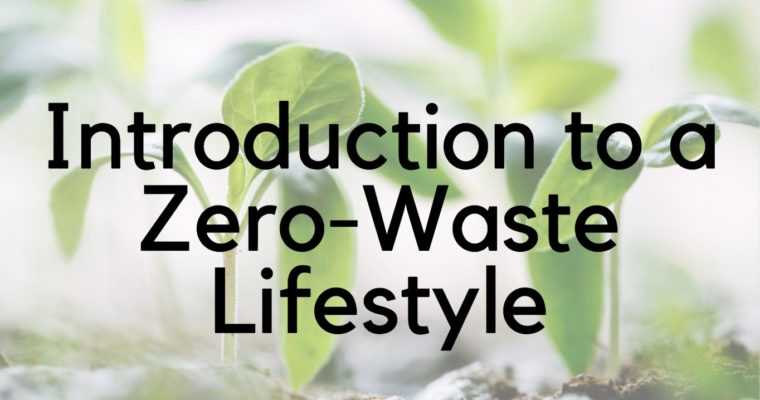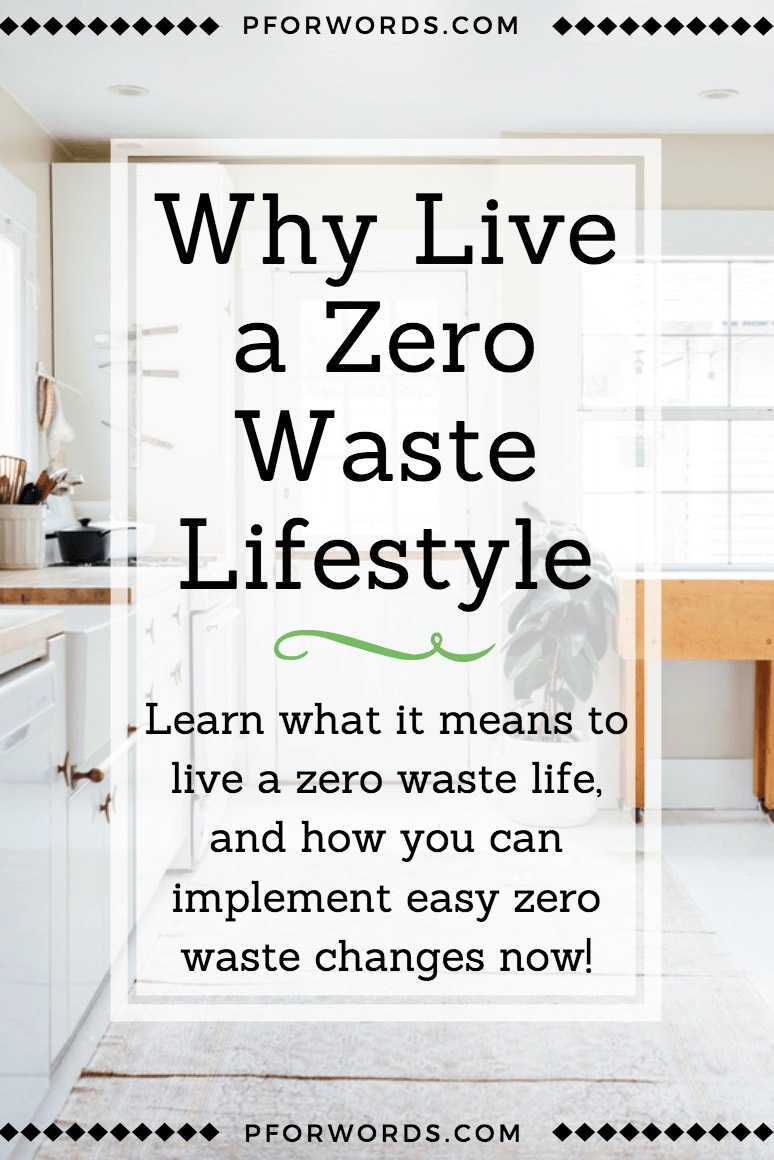Introduction to a Zero Waste Lifestyle
To some who have never explored living a zero waste life, I can imagine that a zero waste lifestyle seems extreme and daunting. However, before I dive into how easy living zero waste actually is, consider how extreme it is if humans continue to follow our current path of consumption and trash output.
The world generates at least 3.5 million tons of solid waste a day, 10 times the amount a century ago, according to World Bank researchers. If no action is taken, that figure will grow to 11 million tons by the end of the century, these researchers estimate.
Of the 8.3 billion metric tons of plastic humans have produced in the past six decades, 6.3 billion metrics tons have thrown into landfills. 8 million metric tons of plastic ends up in our oceans every year.
If our current rate of plastic production continues, by 2050 there will be 12 billion metric tons of plastic waste in landfills alone, roughly 35,000 times as heavy as the Empire State building.
You're not alone if you find these statistics alarming. This rise in the amount of garbage in landfills has bred a cultivated a following of modern-day eco-warriors.
These individuals fight the societal notion of needing superfluous packaging, plastic, clothes, etc to succeed in our modern society. Armed with mason jars and reusable cutlery, this group aims to live a zero waste lifestyle.
Keep reading to learn what a zero waste lifestyle entails, and how you can implement a few zero waste principles in your everyday life now!
Guiding Principles of Zero Waste
Zero waste promotes the reuse of manufactured products and materials that you would otherwise be inclined to throw out.
Zero waste activists fight the traditional philosophy of our linear economy, where the norm is to send any given product directly into the trash (and to the landfill) after its initial use.
Instead, this lifestyle promotes the ideology of a circular economy: items are produced and purchased with the intent to be reused, as they are durable and capable of repair, and will be continuously reused until they are ultimately recycled (or, even better, when they can be composted).
Linear Economy Example:
Buy a shirt from H&M (which is made in an unsustainable sweatshop, and contributed to the destruction of the local environment and the health of its workers).
Wear until it has a hole, or is simply unfashionable, and then throw it out; then go buy a new one (or three).
Repeat until you or the planet is dead, whichever comes first.
Circular Economy:
Buy a cotton shirt from a thrift store, or a fair trade, sustainable manufacturer.
Wear that shirt until it has a hole and then sew that hole.
Once you’ve worn it beyond repair, cut it into rags and use it instead of wasting money on paper towels. Wash those rags in the laundry, reusing continually.
Once the rags are beyond repair, compost them. Not only have you helped save the planet, you've helped save your budget.
What Zero Waste Is Not:
Your Recycling
Recycling is better than throwing out for sure, but it isn’t the end-all-be-all solution.
Recycling still requires energy; more than that, our recycling institutions (at least in the USA) are far from perfect or energy efficient.
Between the varying types of recyclable materials your local recycling center accepts, and the ‘recycling saves all’ myth, a fair amount of materials do not end up recycled.
Local laws determine what kind of materials can be recycled, which vary from city to city and from state to state. These relatively unknown recycling differences lead many people to believe that 100% of the items they put in the green or blue bin every week is being recycled, which is far from reality.
That same mentality of throwing everything in the recycling bin to make yourself feel better about helping the planet is still contributing to our global trash problem.
(Note: this recycling effort does not apply to plastic, only glass and metals. Plastic is evil, but I’ll get into that later.)
Living like a Hermit
Some people who are skeptical of the zero waste movement make the argument that living this kind of lifestyle requires a hermit-like state of mind; always staying home and never venturing outside because you might create trash.
This is not the case.
Zero wasters still go out and live their everyday lives: Lauren Singer, a posterchild of the zero waste world, is a gregarious, outgoing 25 year old and owns her own zero-waste business. She is certainly living life to it’s fullest, in one of the dirtiest cities (New York).
The key is to just leave your house prepared and find fun, zero-waste activities.
Go out and go to the bar – just remember to ask for your drink with no straw, have a picnic – just bring your food in reusable containers and bags.
Being zero waste just means you have to be prepared, and a little creative, each day.
What Zero Waste Is:
Eliminating Plastic
Although being zero waste entails not throwing anything in the trash, like food scraps or recyclable materials, the number one principle is no plastic.
Plastic is the devil incarnate: it’s virtually impossible to biodegrade, the little shit stays with us forever. Actually, all the little shits have created a big shit because most of the plastic ends up in our oceans, due to the gross amount of plastic the US alone uses and tosses in one year, and the lack of places to store all that trash.
Plastic items do break down, but only into tiny micro-beads that are harder to clean up and consumed by marine life that mistake it for food.
Then that plastic moves up the food chain, including into OUR diet – every fish sold for human consumption contains an average of 11 pieces of plastic.
Like I said, plastic is the worst.
Being More Intentional with Purchases
Choose items made from sustainable materials and take good care of them.
Fix them when needed, and pass on to someone else if you find you don’t need it anymore.
Thrift for items before buying new, if possible.
Only buy what you need when you need it to avoid excess, unnecessary consumption (and to save money).
How to apply zero-waste mentality to your life?
There are blogs and websites dedicated to ensuring a zero-waste lifestyle, this one included. But honestly, you don’t need to get super fancy with it to begin.
Just taking these 4 easy steps will drastically cut down on your trash output.
1. ALWAYS skip the plastic bags.
Opt for a cotton reusable (and while we’re at it, ditch the thin plastic bags people use to put their produce it. Either put the produce in your cart and wash well when you get home or invest \$12 in a reusable set.) While you find these anywhere, I bought this one from the Package Free Shop in NYC. I love Lauren Singer and am happy to support her business and mission.
2. Reusable water bottle.
I feel like this one is a no-brainer. You can find water fountains everywhere now (and if for some reason you can’t, pop into a coffee shop and ask the barista for tap water-- they are obligated to do so and I’ve never had anyone be nasty to me for asking). I personally love this one as it keeps my water cold for such a long time, does not leak, and looks pretty stylish in my opinion.
3. Reusable thermos.
I am addicted to coffee. To continue to fuel my caffeine addiction I invested in a \$30 thermos from Klean Kanteen which is leakproof (I love their stuff).
I also now make my own coffee which has saved so much money. But if you’re still jonesing for your Starbucks, ask them to use your thermos. I’ve never had any deny me. If anything, people thank me.
4. Thrift.
Channel your inner Macklemore and get your thrift on. This saves perfectly good clothes from ending up in the landfill, while also saving your big bucks. I can get a quality head-to-toe look for less than \$20!
Sources of inspiration:
In case this post wasn’t enough for you, I HIGHLY recommend checking out these two lovely ladies. They were my introduction to this lifestyle and continue to act as role models for me.
Bea Johnson: Widely accredited as the founder of the zero waste movement, Bea Johnson lives a trash-free life with her husband and two sons in California. On top of her great French accent, she also has an amazing book about how to transition to a zero-waste lifestyle.
Lauren Singer: A 25-year-old gal living a zero waste lifestyle in the Big Apple. After being frustrated with a single-use plastic loving girl in her environmental studies class at NYU, Lauren realized she was no better. With an apartment and fridge littered with consumer plastic, Lauren made a vow to become zero-waste 5 years ago.
Wrapping it up!
I hope this gave you a brief insight into what a zero-waste lifestyle looks like, the motivations behind going zero-waste, and tips you can employ now! If you have any questions, please leave them below and I'll be sure to get back to you! Thank you for joining me on this journey.
As always, please leave any questions or thoughts you have down below! If there's any topic you'd like to me to cover, lemme know!
Hi, I'm Taylor
Amateur adult. Zero waste zealot. Personal finance fiend. Spicy food supporter. I’m an mid 20’s gal living in Denver, Colorado. My love of the outdoors has cultivated my zero waste lifestyle, which inadvertently fueled my passion for personal finance. Cheers to everyone interested in lessening their footprint while growing their wallet!

